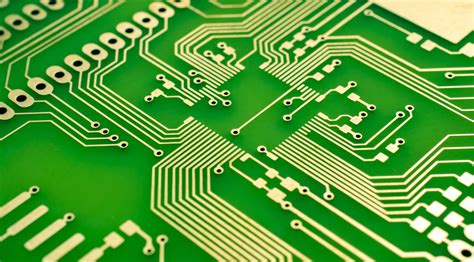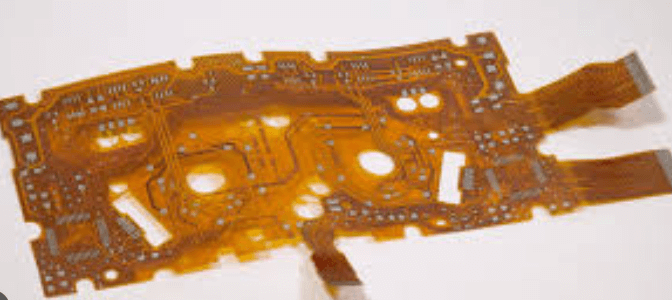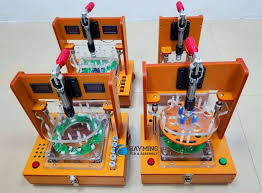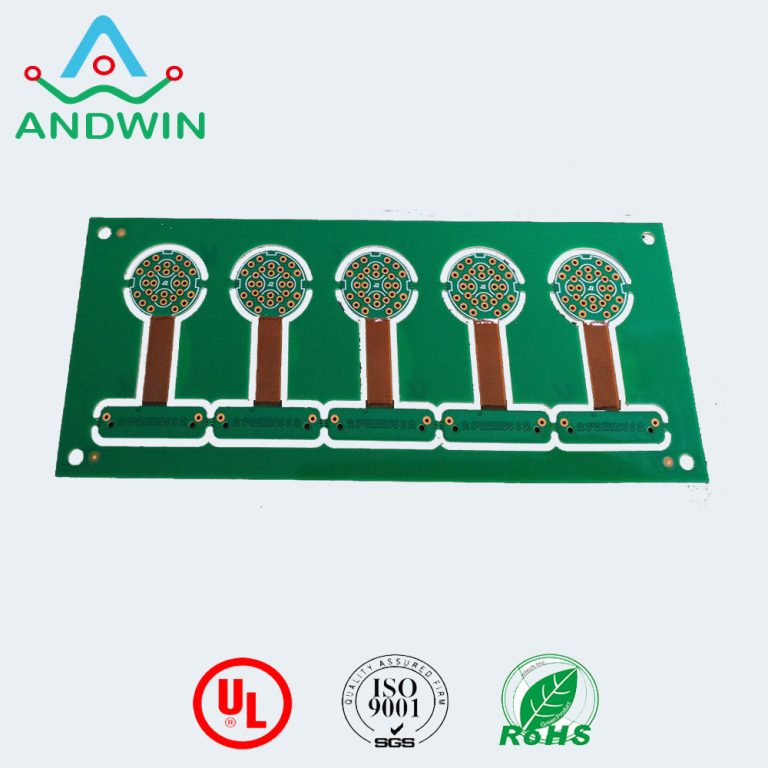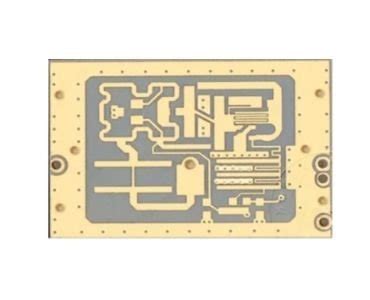Effective Approaches to Board PCB Assembly Techniques
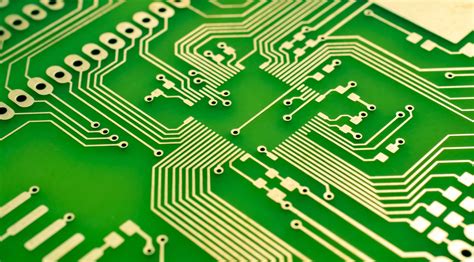
Key Takeaways
In the realm of PCB assembly, several essential insights can guide manufacturers toward more effective practices. Firstly, understanding the fundamental principles of PCBA is critical. This includes recognizing the role of various components, such as resistors and capacitors, and their placement on the PCB for optimal functionality.
Best practices suggest thorough planning during the design phase to minimize issues during assembly. Utilizing advanced software for design simulations can significantly enhance precision, reducing costly errors and improving overall production speed. Innovative techniques such as surface mount technology (SMT) allow for higher component density on boards, thus saving space without compromising performance.
Regarding quality control in PCB manufacturing, essential tools include automated optical inspection (AOI) systems, which ensure that each component is correctly placed and soldered. Keeping a checklist of common assembly challenges can aid technicians in troubleshooting effectively. For instance:
| Common Challenges | Solutions |
|---|---|
| Misalignment of Parts | Use precision tooling |
| Soldering Defects | Implement rigorous inspections |
| Component Damage | Train staff on careful handling |
Moreover, fostering a culture of continuous improvement through feedback loops from production lines enhances learning and quality over time.
“Regular training and updates for assembly teams can prevent many common pitfalls in PCB assembly processes.”
Finally, staying informed about emerging trends in PCBA technology will prepare companies for future advancements in the industry, enabling them to remain competitive and efficient in an ever-evolving market landscape.
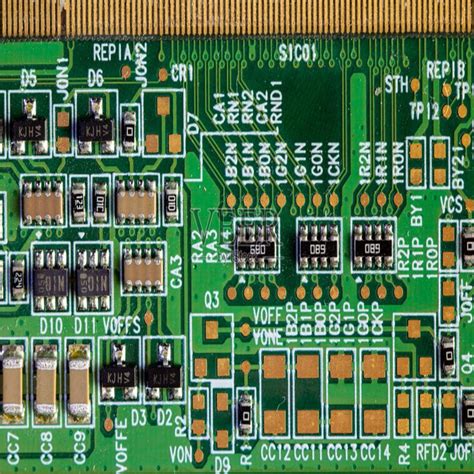
Understanding the Basics of Board PCB Assembly
Board PCB assembly (PCBA) is a fundamental process in the electronics manufacturing industry, involving the assembly of various electronic components onto a printed circuit board. The process starts with the design of the PCB, which is crucial for ensuring that all components are correctly placed and electrical connections are optimal. A well-laid-out PCB design can minimize issues during assembly and improve the overall performance of the final product. Once the design is confirmed, components such as resistors, capacitors, and integrated circuits are mounted onto the board using methods like surface mount technology (SMT) or through-hole technology.
The choice between these techniques often depends on factors such as component size, type, and cost considerations. Following component placement, various soldering techniques, including wave soldering or reflow soldering for SMT components, are employed to establish secure connections. Calibration and alignment play significant roles in this stage to ensure each component functions correctly within the circuit.
An understanding of basic principles such as thermal management, electrical characteristics, and mechanical stress during both assembly and operation can help manufacturers avoid common pitfalls in early design stages. Ultimately, a thorough grasp of these basics provides a solid foundation for implementing more advanced techniques and approaches that enhance both efficiency and quality in pcb assembly operations.

Best Practices for Efficient PCB Design
When embarking on pcb assembly, one of the primary steps to ensure success is focused on efficient PCB design. Effective design strategies not only reduce potential errors but also facilitate smoother assembly processes. To achieve this, it’s crucial to understand the fundamentals of PCBA. Start by selecting the right components, as improper choices can lead to complications during assembly and affect the functionality of the final product. Moreover, adopting a modular design can significantly enhance manufacturability; modules are easier to test and assemble, which in turn minimizes rework and saves time.
Incorporating a well-structured layout is equally vital for efficient pcb assembly. Pay careful attention to trace routing and component placement—these factors directly influence signal integrity and thermal performance. Keeping traces short and avoiding crossing paths will further help to mitigate issues during later stages of manufacturing. It’s also beneficial to maintain a consistent pad size and follow standardized footprints when choosing components, as these habits enhance design for manufacturability (DFM).
Additionally, leveraging advanced software tools for simulation can preemptively identify potential issues before physical assembly occurs. Automation in design tasks not only boosts productivity but also reduces the likelihood of human error, making for a more streamlined approach to creating effective PCBA layouts. By integrating these best practices into your PCB design phase, you pave the way for more efficient assembly processes, thereby ultimately improving overall product quality and reducing manufacturing costs.

Innovative Techniques in PCB Assembly
The modern landscape of pcb assembly has transformed significantly, largely due to the introduction of innovative techniques that enhance productivity and precision. One prominent method is surface mount technology (SMT), which allows for the placement of components directly onto the surface of PCBs, drastically reducing the space required and improving assembly speed. Coupled with automated pick-and-place machines, SMT enables high volume production while maintaining exceptional quality standards in pcba processes. Additionally, the integration of laser soldering has emerged as a valuable alternative to traditional soldering techniques. This method not only ensures greater thermal control but also minimizes the risk of component damage during assembly. Another key innovation is the use of machine vision systems, which enhance inspection processes by detecting defects or misalignments in real-time, thereby reducing waste and rework costs in PCB manufacturing. Moreover, advancements in software tools for design for manufacturing (DFM) ensure that boards are optimized for assembly prior to production. These cutting-edge approaches collectively contribute to a more efficient and reliable pcb assembly process, ultimately playing a crucial role in meeting the growing demands of electronic manufacturing while ensuring quality outputs that meet industry standards.
Essential Tools for Quality Control in PCB Manufacturing
Quality control in PCB assembly is crucial for ensuring that electronic devices meet safety, performance, and reliability standards. Various essential tools can significantly enhance the quality assurance processes during PCBA. One of the primary tools is the Automated Optical Inspection (AOI) system, which utilizes high-resolution cameras to inspect PCB layouts for defects such as misalignments or soldering issues. This technology allows manufacturers to detect problems early in the assembly process, preventing costly errors downstream. Additionally, X-ray inspection systems serve as an invaluable asset in examining hidden solder joints, particularly in multilayer boards where external visibility is limited.
Moreover, testing equipment such as oscilloscopes and multimeters is indispensable for evaluating circuit functionality after assembly. Employing software solutions for data analysis can also assist in identifying trends and patterns from testing results, enabling continuous improvement. Furthermore, utilizing cleanroom environments equipped with proper ESD protection tools ensures that electronic components are shielded from contamination and electrostatic discharge during the production process. By leveraging these advanced tools, manufacturers can maintain high standards of quality control in their PCBA, ultimately leading to improved reliability and performance of electronic devices in the market.
Streamlining the Assembly Process: Tips and Tricks
To enhance efficiency in pcb assembly processes, it is crucial to focus on several key strategies that streamline operations while ensuring quality. First, implementing a thorough design for manufacturability (DFM) approach can significantly reduce complexities during assembly. By ensuring that the PCBA design aligns closely with the capabilities of assembly equipment, potential issues can be identified and addressed early on. Additionally, utilizing automated pick-and-place machinery not only speeds up the assembly process but also minimizes human error, resulting in a higher-quality output. Regular maintenance of these machines is essential to sustain their optimal performance.
Furthermore, adopting lean manufacturing principles can optimize workflow and reduce waste in the assembly line. Establishing clear communication among team members and conducting regular training sessions on new techniques can enhance overall operation efficiency. The use of real-time monitoring tools can provide valuable insights into the assembly process, allowing quick adjustments to be made when discrepancies arise. Lastly, investing in qualitative materials that ensure compatibility with your chosen assembly methods is vital for achieving optimum results in your pcb assembly projects. With these effective approaches in place, manufacturers can witness significant improvements in their production timelines and product quality.
Troubleshooting Common PCB Assembly Challenges
In the realm of pcb assembly (or PCBA), various challenges can arise, demanding systematic troubleshooting approaches to ensure efficiency and quality. One prevalent issue in PCB assembly is the misalignment of components during placement. This can lead to soldering defects, which compromise the integrity of the circuit. Utilizing precise alignment tools and verifying placements through automated optical inspection can mitigate these errors early in the process. Another common challenge is solder joint reliability; improper soldering techniques may result in weak connections. Implementing best practices such as selecting the right solder materials and controlling thermal profiles during reflow can greatly enhance joint strength. Additionally, managing component variations is critical; discrepancies in parts can lead to unexpected failures. Establishing a thorough supply chain quality control process, including regular inspections and supplier assessments, helps ensure that only reliable components are integrated into the pcba ecosystem. Furthermore, environmental factors like humidity and temperature also play a significant role in pcb assembly outcomes. Maintaining controlled conditions during both assembly and storage to prevent moisture absorption is essential for achieving high-quality assemblies. Addressing these challenges head-on with strategic troubleshooting methods not only enhances efficiency but also contributes to the overall reliability of electronic manufacturing processes.
The Future of PCB Assembly: Trends and Predictions
As the landscape of pcb assembly continues to evolve, several trends are shaping the future of PCB manufacturing. A growing emphasis on automation and robotics is becoming increasingly evident, as businesses look to optimize production efficiency. This trend is bolstered by advancements in smart technology, enabling real-time monitoring and analysis of the pcba process. Furthermore, the rise of Industry 4.0 signifies a shift towards greater connectivity, where machines communicate with one another and data is harnessed to enhance operational performance.
Another significant trend is the increased demand for miniaturization in electronic devices. This has led to innovations in design methodologies that facilitate more compact PCB assembly without compromising functionality or performance. In parallel, there is a heightened awareness around sustainability; manufacturers are exploring environmentally friendly materials and processes that reduce waste during the pcba lifecycle.
Moreover, as consumer electronics continue to thrive, there is an unmistakable push for shorter production cycles. Companies are adopting agile methodologies that allow swift adaptation to market changes while maintaining stringent quality control standards. This acceleration in production not only meets consumer expectations but also enhances overall competitiveness in the evolving landscape of electronics.
In summary, the future of pcb assembly is poised for transformative advancements driven by automation, sustainability initiatives, and innovative design approaches that respond to ever-changing consumer demands. As technology progresses, these trends will undeniably influence how electronic components are designed, manufactured, and assembled moving forward.
Case Studies: Successful PCB Assembly Implementations
Exploring real-world pcb assembly case studies provides valuable insights into effective strategies and techniques utilized by various companies in the industry. One notable example is a leading electronics manufacturer that adopted advanced pcba methodologies to streamline their production line. By implementing a combination of automated processes and precise quality control measures, this company was able to significantly reduce assembly time while improving the overall product reliability. Their approach emphasized the importance of selecting high-quality materials and leveraging innovative tools for soldering and placement, which played a critical role in minimizing defects during production.
Another fascinating case highlights a small startup that successfully scaled its operations through the use of modular pcb assembly techniques. They experimented with open-source design software, enabling rapid prototyping and iterative testing before moving to full-scale production. This flexibility allowed them to adapt quickly to market feedback, ensuring that their final products met consumer expectations while maintaining cost-efficiency.
These case studies not only demonstrate the diverse applications of various pcba methods but also highlight the necessity for continuous improvement in electronic manufacturing processes. By learning from these successful implementations, companies can adopt similar practices to enhance efficiency and pivot towards emerging trends in pcb assembly, ultimately driving both innovation and competitiveness in the marketplace.
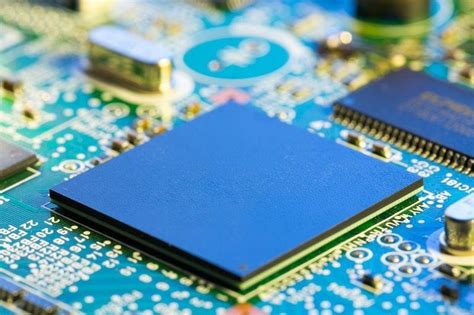
Conclusion
In summary, efficient PCB assembly (PCBA) is a crucial component in the realm of electronic manufacturing, impacting both productivity and product quality. By implementing effective approaches and adhering to best practices, manufacturers can significantly enhance their assembly processes. Emphasizing the importance of innovative techniques, it becomes clear that leveraging advanced methods can streamline operations while maintaining high standards of quality control. Finally, the integration of essential tools not only aids in troubleshooting common challenges experienced during pcb assembly but also fosters a more organized and efficient production environment. As the industry continues to evolve, staying abreast of trends and innovations will be paramount in ensuring competitiveness in a rapidly changing landscape.
FAQs
What is PCB assembly?
PCB assembly, often abbreviated as PCBA, refers to the process of soldering electronic components onto a printed circuit board (PCB) to create a functional electronic assembly. This process is critical in the manufacturing of electronic devices.
What are the different types of PCB assembly techniques?
There are primarily two types of PCB assembly techniques: through-hole and surface mount technology (SMT). While through-hole components have leads that pass through the PCB, SMT components are mounted directly on the surface, making SMT generally more efficient.
What tools are essential for PCB assembly?
Essential tools for effective pcb assembly include soldering tools, automated placement machines, inspection cameras, and reflow ovens. Each tool plays a specific role in ensuring high-quality performance and reducing production inefficiencies.
How can I troubleshoot issues in PCB assembly?
Common issues in pcb assembly can include misalignment of components, improper solder joints, or even component failure. To troubleshoot, it’s important to use inspection tools like X-ray machines and perform regular testing using multi-meters and oscilloscopes.
What materials are commonly used in PCB manufacturing?
The most common materials used in manufacturing PCBs include FR-4, a fiberglass epoxy laminate, copper for conductive pathways, and various coatings that enhance durability and reliability during assembly.

